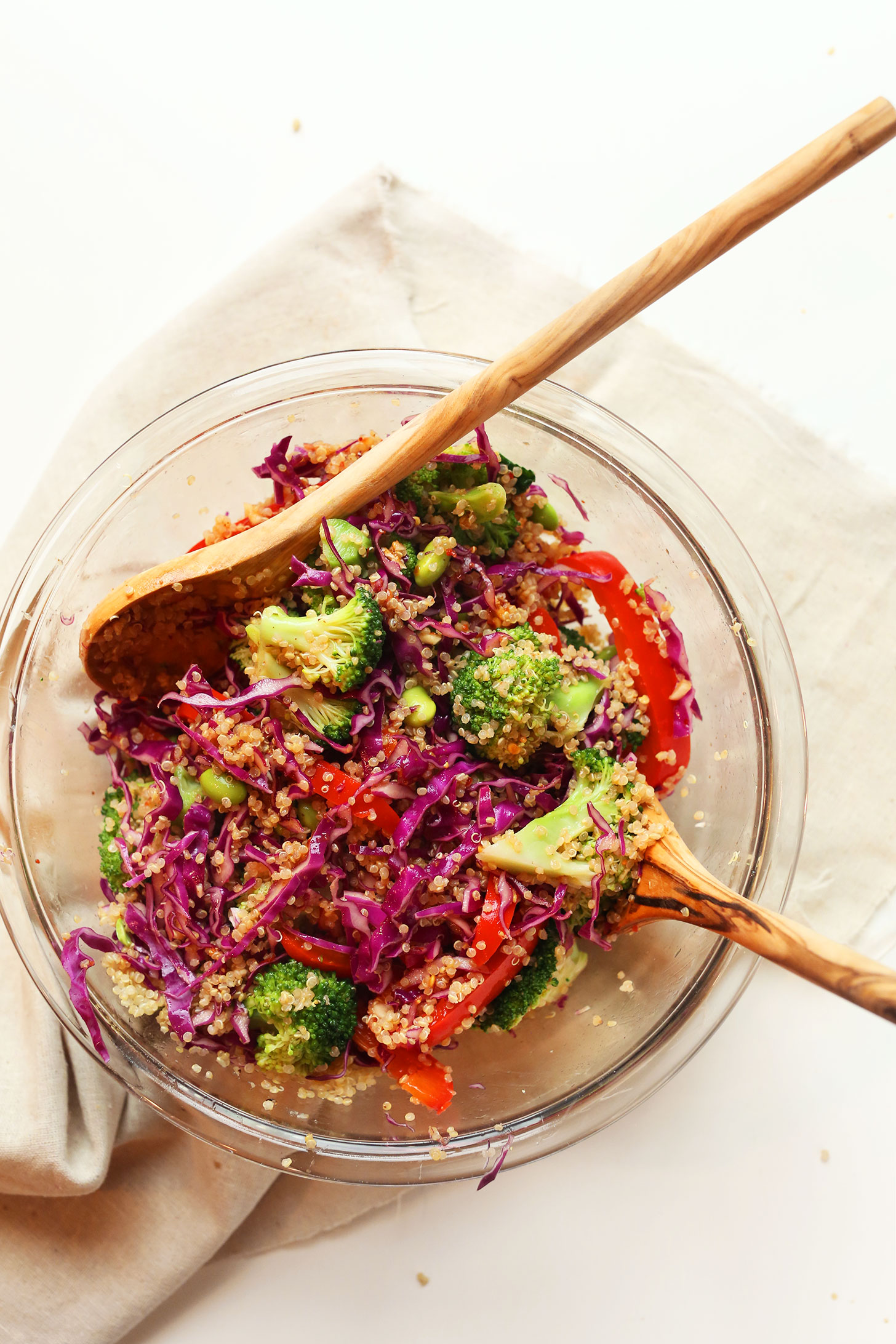
Friday, March 29, 2019
Thursday, March 28, 2019
Fruit and Veggie Tip - Bake
BAKE
- Sweet potato fries by cutting up into slices and
seasoning with olive oil, cayenne pepper and a dash of salt.
- Peaches for a sweet snack. Slice in half, drizzle on
some honey and sprinkle with ginger and pecans.
- Winter squash. Drizzle with olive oil and sprinkle with
cinnamon.
- A potato for lunch. Top with broccoli and a sprinkle of
cheese.
- An apple for dessert. Fill the core with dried fruit
and nuts

Wednesday, March 27, 2019
Fruit and Veggie Tip - Boil
BOIL
- Diced or crushed tomatoes in a vegetable or chicken
broth for the base of a homemade tomato soup! Add fresh herbs and spices
to make your own unique recipe.
- Apples with lemon juice and cinnamon. Mash up and serve
warm or chilled.
- Turnips and potatoes. Mash them together and season
with salt and pepper.
- Kale, and add a handful of chopped currants, salt and
pepper.
- Butternut squash and season with salt, pepper and a
drizzle of olive oil.

Tuesday, March 26, 2019
Fruit and Veggie Tip - Stir Fry
STIR FRY
- Pineapple and mango in a honey ginger sauce for a
perfect topping to low- or fat-free ice cream.
- Zucchini, yellow squash, diced tomatoes and mushrooms
with olive oil and herbs. Add some diced jalapeno for an extra kick and
serve over brown rice.
- Broccoli in olive oil and chopped garlic. Add some
capers for extra zip.
- Frozen mixed veggies. Add a dash of low sodium soy
sauce, or flavor with herbs.
- Onions, peppers, zucchini, corn and jicama. Throw in
some red or black beans. Season with your favorite salsa to give it a
Southwestern flair. Serve over rice.

Monday, March 25, 2019
Friday, March 22, 2019
BLACK BEAN AND AVOCADO ENCHILADAS
I looooooove enchiladas and I loooove trying new kinds!
Check out these black bean and avocado enchiladas! YUM!


Check out these black bean and avocado enchiladas! YUM!


Thursday, March 21, 2019
Wednesday, March 20, 2019
Focus on Fruit
10 tips to help you eat more fruits
- Keep visible reminders. Keep a bowl of whole fruit on the table, counter, or in the refrigerator.
- Think about taste. Buy fresh fruits in season when they may be less expensive and at their peak flavor. Add fruits to sweeten a recipe.
- Think about variety. Buy fruits that are dried, frozen, and canned (in water or 100% juice) as well as fresh, so that you always have a supply on hand.
- Don’t forget the fiber. Make most of your choices whole or cut-up fruit, rather than juice, for the benefits that dietary fiber provides.
- Be a good role model. Set a good example for children by eating fruit every day with meals or as snacks.
- Include fruit at breakfast. At breakfast, top your cereal with bananas, peaches, or strawberries; add blueberries to pancakes; drink 100% orange or grapefruit juice. Or, try a fruit mixed with fat-free or low-fat yogurt.
- Try fruit at lunch. At lunch, pack a tangerine, banana, or grapes to eat, or choose fruits from a salad bar. Individual containers of fruits like peaches or applesauce are easy and convenient.
- Experiment with fruit at dinner, too. At dinner, add crushed pineapple to coleslaw, or include orange sections, dried cranberries, or grapes in a tossed salad.
- Snack on fruits. Dried fruits make great snacks. They are easy to carry and store well.
- Keep fruits safe. Rinse fruits before preparing or eating them. Under clean, running water, rub fruits briskly to remove dirt and surface microorganisms. After rinsing, dry with a clean towel.


Tuesday, March 19, 2019
Vary Your Veggies
10 tips to help you eat more vegetables
- Discover fast ways to cook. Cook fresh or frozen vegetables in the microwave for a quick-and-easy dish to add to any meal. Steam green beans, carrots, or broccoli in a bowl with a small amount of water in the microwave for a quick side dish.
- Be ahead of the game. Cut up a batch of bell peppers, carrots, or broccoli. Pre-package them to use when time is limited. You can enjoy them on a salad, with hummus, or in a veggie wrap.
- Choose vegetables rich in color. Brighten your plate with vegetables that are red, orange, or dark green. They are full of vitamins and minerals. Try acorn squash, cherry tomatoes, sweet potatoes, or collard greens. They not only taste great but also are good for you, too.
- Check the freezer aisle. Frozen vegetables are quick and easy to use and are just as nutritious as fresh veggies. Try adding frozen corn, peas, green beans, spinach, or sugar snap peas to some of your favorite dishes or eat as a side dish.
- Stock up on veggies. Canned vegetables are a great addition to any meal, so keep on hand canned tomatoes, kidney beans, garbanzo beans, mushrooms, and beets. Select those labeled as “reduced sodium,” “low sodium,” or “no salt added.”
- Make your garden salad glow with color. Brighten your salad by using colorful vegetables such as black beans, sliced red bell peppers, shredded radishes, chopped red cabbage, or watercress. Your salad will not only look good but taste good, too.
- Sip on some vegetable soup. Heat it and eat it. Try tomato, butternut squash, or garden vegetable soup. Look for reduced- or low-sodium soups.
- While you’re out. If dinner is away from home, no need to worry. When ordering, ask for an extra side of vegetables or side salad instead of the typical fried side dish.
- Savor the flavor of seasonal vegetables. Buy vegetables that are in season for maximum flavor at a lower cost. Check your local supermarket specials for the best-in-season buys. Or visit your local farmer’s market.
- Try something new. You never know what you may like. Choose a new vegetable—add it to your recipe or look up how to fix it online.


Monday, March 18, 2019
CREAMY AVOCADO, ARTICHOKE & KALE DIP
It's so difficult to stay on the healthy train when attending parties and events! If you're asked to bring an appetizer or dish to an upcoming event. Try this one!




Friday, March 15, 2019
Thursday, March 14, 2019
Overcoming Barriers
 Understanding common barriers to physical activity and creating strategies to overcome them may help you make physical activity part of your daily life.
Understanding common barriers to physical activity and creating strategies to overcome them may help you make physical activity part of your daily life.Lack of Time:
- Identify available time slots. Monitor your daily activities for one week. Identify at least three 30 minute time slots you could use for physical activity.
- Add physical activity to your daily routine. For example, walk or ride your bike to work or shopping, organize school activities around physical activity, walk the dog, exercise while you watch TV, park farther away from your destination, etc.
- Select activities requiring minimal time, such as walking, jogging, or stair climbing.
Social Influence:
- Explain your interest in physical activity to friends and family. Ask them to support your efforts.
- Invite friends and family members to exercise with you. Plan social activities involving exercise.
- Develop new friendships with physically active people. Join a group, such as the YMCA or a hiking club.
Lack of Energy:
- Schedule physical activity for times in the day or week when you feel energetic.
- Convince yourself that if you give it a chance, physical activity will increase your energy level; then, try it.
Lack of Motivation:
- Plan ahead. Make physical activity a regular part of your daily or weekly schedule and write it on your calendar.
- Invite a friend to exercise with you on a regular basis and write it on both your calendars.
- Join an exercise group or class.
Fear of Injury:
- Learn how to warm up and cool down to prevent injury.
- Learn how to exercise appropriately considering your age, fitness level, skill level, and health status.
- Choose activities involving minimum risk.
Lack of Skill:
- Select activities requiring no new skills, such as walking, climbing stairs or jogging.
- Take a class to develop new skills.
- Select activities that require minimal facilities or equipment, such as walking, jogging, jumping rope, or calisthenics (exercises using your own body weight).
- Identify inexpensive, convenient resources available in your community (community education programs, park and recreation programs, worksite programs, etc.)
Weather Conditions:
- Develop a set of regular activities that are always available regardless of weather (indoor cycling, aerobic dance, indoor swimming, calisthenics, stair climbing, rope skipping, mall walking, dancing, gymnasium games, etc.)
Travel:
- Put a jump rope in your suitcase and jump rope.
- Walk the halls and climb the stairs in hotels.
- Stay in places with swimming pools or exercise facilities.
- Join the YMCA or YWCA (ask about reciprocal membership agreement).
- Visit the local shopping mall and walk for half an hour or more.
- Bring your MP3 player with your favorite aerobic exercise music.
Family Obligations:
- Trade babysitting time with a friend, neighbor, or family member who also has small children.
- Exercise with the kids-go for a walk together, play tag or other running games, get an aerobic dance or exercise tape for kids (there are several on the market) and exercise together. You can spend time together and still get your exercise.
- Jump rope, do calisthenics, ride a stationary bike, or use other home gymnasium equipment while the kids are busy playing or sleeping.
- Try to exercise when the kids are not around (e.g. during school hours or nap times)
Retirement Years:
- Look upon your retirement as an opportunity to become more active instead of less. Spend more time gardening, walking the dog, and playing with your grandchildren. Children with short legs and grandparents with slower gaits are often great walking partners.
- Learn a new skill you’ve always been interested in, such as ballroom dancing, square dancing, or swimming.
Content in the "Personal Barriers" section was taken from Promoting Physical Activity: A Guide for Community Action (USDHHS, 1999).

Wednesday, March 13, 2019
Active Lifestyle
A physically active lifestyle is fundamental to good health. Regular exercise is one of the best predictors of health, and no matter what you weigh, you can’t afford to be a couch potato. Yet most Utah adults don’t meet the recommended levels of physical activity.
So where do you start? Escaping from a sedentary lifestyle can seem daunting, but it doesn’t need to be. Here are some tips for developing and maintaining a regular physical activity regimen.
Just start, no matter how small! The rule with exercise is that none is bad, some is good, and more is better. Don’t worry if you can’t meet the recommendations right away. Be patient, and aim for progress, not perfection.

So where do you start? Escaping from a sedentary lifestyle can seem daunting, but it doesn’t need to be. Here are some tips for developing and maintaining a regular physical activity regimen.
Just start, no matter how small! The rule with exercise is that none is bad, some is good, and more is better. Don’t worry if you can’t meet the recommendations right away. Be patient, and aim for progress, not perfection.
- Start with aerobic activities, which have the most substantial health benefits. Use large muscle groups for enough time to raise your heart rate and break a sweat. Later on, you can add balance, flexibility, or strength training for even more benefits.
- Start slowly and build up slowly. If you’ve been inactive for some time, you might just take a ten-minute walk every couple of days. But schedule a time and make it a part of your routine. Later, you can increase the duration of the exercise, and then the intensity. Aim for at least 150 minutes of moderate activity each week. (Just 30 minutes, five days a week!)
- Sit less. Too much time sitting can increase your risk for chronic disease, even if you get the recommended 150 minutes a week. Aim for less than two hours of screen time a day, not including work and school, and try to sit for less than six hours total. If you have to sit a lot, stand up and move around for two or three minutes every half hour.
- Do what works for YOU. You’re more likely to keep a habit that reflects who you are and what you enjoy. Exercising with a friend or family member can help you stay on a schedule and can make workouts more fun. But listening to music or audiobooks can give you time for solitude and reflection. Find what works for you.


Tuesday, March 12, 2019
Vigorous Intensity Exercise
 Vigorous intensity means you're breathing hard and fast, and your heart rate has gone up quite a bit. If you're working at this level, you won't be able to say more than a few words without pausing for a breath. Here are some examples of activities that require vigorous effort:
Vigorous intensity means you're breathing hard and fast, and your heart rate has gone up quite a bit. If you're working at this level, you won't be able to say more than a few words without pausing for a breath. Here are some examples of activities that require vigorous effort:- Jogging or running
- Swimming laps
- Riding a bike fast or on hills
- Playing singles tennis
- Playing basketball
Build up over time
If you want to do more vigorous-level activities, slowly replace those that take moderate effort like brisk walking, with more vigorous activities like jogging.
You can do moderate- or vigorous-intensity aerobic activity, or a mix of the two each week. A rule of thumb is that 1 minute of vigorous-intensity activity is about the same as 2 minutes of moderate-intensity activity.
Some people like to do vigorous types of activity because it gives them about the same health benefits in half the time. If you haven't been very active lately, increase your activity level slowly. You need to feel comfortable doing moderate-intensity activities before you move on to more vigorous ones. The guidelines are about doing physical activity that is right for you.

Monday, March 11, 2019
Friday, March 8, 2019
CHIPOTLE BLACK BEAN TORTILLA SOUP
I am a sucker for a good soup recipe! And this one definitely exceeds my expectations! Check it out.




Thursday, March 7, 2019
Moderate Intensity Aerobic Exercise
 Moderate intensity means you're working hard enough to raise your heart rate and break a sweat. One way to tell is that you'll be able to talk, but not sing the words to your favorite song. Here are some examples of activities that require moderate effort:
Moderate intensity means you're working hard enough to raise your heart rate and break a sweat. One way to tell is that you'll be able to talk, but not sing the words to your favorite song. Here are some examples of activities that require moderate effort:- Walking fast
- Doing water aerobics
- Riding a bike on level ground or with few hills
- Playing doubles tennis
- Pushing a lawn mower

Wednesday, March 6, 2019
Muscle Strengthening Activities
 Besides aerobic activity, you need to do
things to strengthen your muscles at least 2 days a week. These activities
should work all the major muscle groups of your body (legs, hips, back, chest,
abdomen, shoulders, and arms).
Besides aerobic activity, you need to do
things to strengthen your muscles at least 2 days a week. These activities
should work all the major muscle groups of your body (legs, hips, back, chest,
abdomen, shoulders, and arms).To gain health benefits, muscle-strengthening activities need to be done to the point where it's hard for you to do another repetition without help. A repetition is one complete movement of an activity, like lifting a weight or doing a sit-up. Try to do 8—12 repetitions per activity that count as 1 set. Try to do at least 1 set of muscle-strengthening activities, but to gain even more benefits, do 2 or 3 sets.
You can do activities that strengthen your muscles on the same or different days that you do aerobic activity, whatever works best. Just keep in mind that muscle-strengthening activities don't count toward your aerobic activity total.
There are many ways you can strengthen your muscles, whether it's at home or the gym. You may want to try the following:
- Lifting weights
- Working with resistance bands
- Doing exercises that use your body weight for resistance (i.e., push-ups, sit ups)
- Heavy gardening (i.e., digging, shoveling)
- Yoga

Tuesday, March 5, 2019
Aerobic Exercise
 Aerobic activity or "cardio" gets
you breathing harder and your heart beating faster. From pushing a lawn mower,
to taking a dance class, to biking to the store – all types of activities
count. As long as you're doing them at a moderate or vigorous intensity for at least
10 minutes at a time.
Aerobic activity or "cardio" gets
you breathing harder and your heart beating faster. From pushing a lawn mower,
to taking a dance class, to biking to the store – all types of activities
count. As long as you're doing them at a moderate or vigorous intensity for at least
10 minutes at a time.Intensity is how hard your body is working during aerobic activity.
How do you know if you're doing light, moderate, or vigorous intensity aerobic activities?
For most people, light daily activities such as shopping, cooking, or doing the laundry doesn't count as moderate or vigorous aerobic activity because your body isn't working hard enough to get your heart rate up.

Monday, March 4, 2019
Saturday, March 2, 2019
Strength training: Get stronger, leaner, healthier
Strength training is an important part of an overall fitness program. Here's what strength training can do for you — and how to get started.
Want to reduce body fat, increase lean muscle mass and burn calories more efficiently? Strength training to the rescue! Strength training is a key component of overall health and fitness for everyone.
Use it or lose it
Lean muscle mass naturally diminishes with age.
You'll increase the percentage of fat in your body if you don't do anything to replace the lean muscle you lose over time. Strength training can help you preserve and enhance your muscle mass at any age.
Strength training may also help you:
Consider the options
Strength training can be done at home or in the gym. Common choices include:

Want to reduce body fat, increase lean muscle mass and burn calories more efficiently? Strength training to the rescue! Strength training is a key component of overall health and fitness for everyone.
Use it or lose it
Lean muscle mass naturally diminishes with age.
You'll increase the percentage of fat in your body if you don't do anything to replace the lean muscle you lose over time. Strength training can help you preserve and enhance your muscle mass at any age.
Strength training may also help you:
- Develop strong bones. By stressing your bones, strength training can increase bone density and reduce the risk of osteoporosis.
- Manage your weight. Strength training can help you manage or lose weight, and it can increase your metabolism to help you burn more calories.
- Enhance your quality of life. Strength training may enhance your quality of life and improve your ability to do everyday activities. Building muscle also can contribute to better balance and may reduce your risk of falls. This can help you maintain independence as you age.
- Manage chronic conditions. Strength training can reduce the signs and symptoms of many chronic conditions, such as arthritis, back pain, obesity, heart disease, depression and diabetes.
- Sharpen your thinking skills. Some research suggests that regular strength training and aerobic exercise may help improve thinking and learning skills for older adults.
Consider the options
Strength training can be done at home or in the gym. Common choices include:
- Body weight. You can do many exercises with little or no equipment. Try pushups, pullups, abdominal crunches and leg squats.
- Resistance tubing. Resistance tubing is inexpensive, lightweight tubing that provides resistance when stretched. You can choose from many types of resistance tubes in nearly any sporting goods store.
- Free weights. Barbells and dumbbells are classic strength training tools.
- Weight machines. Most fitness centers offer various resistance machines. You can also invest in weight machines for use at home.

Friday, March 1, 2019
Subscribe to:
Posts
(
Atom
)








 Check it out here!
Check it out here!

